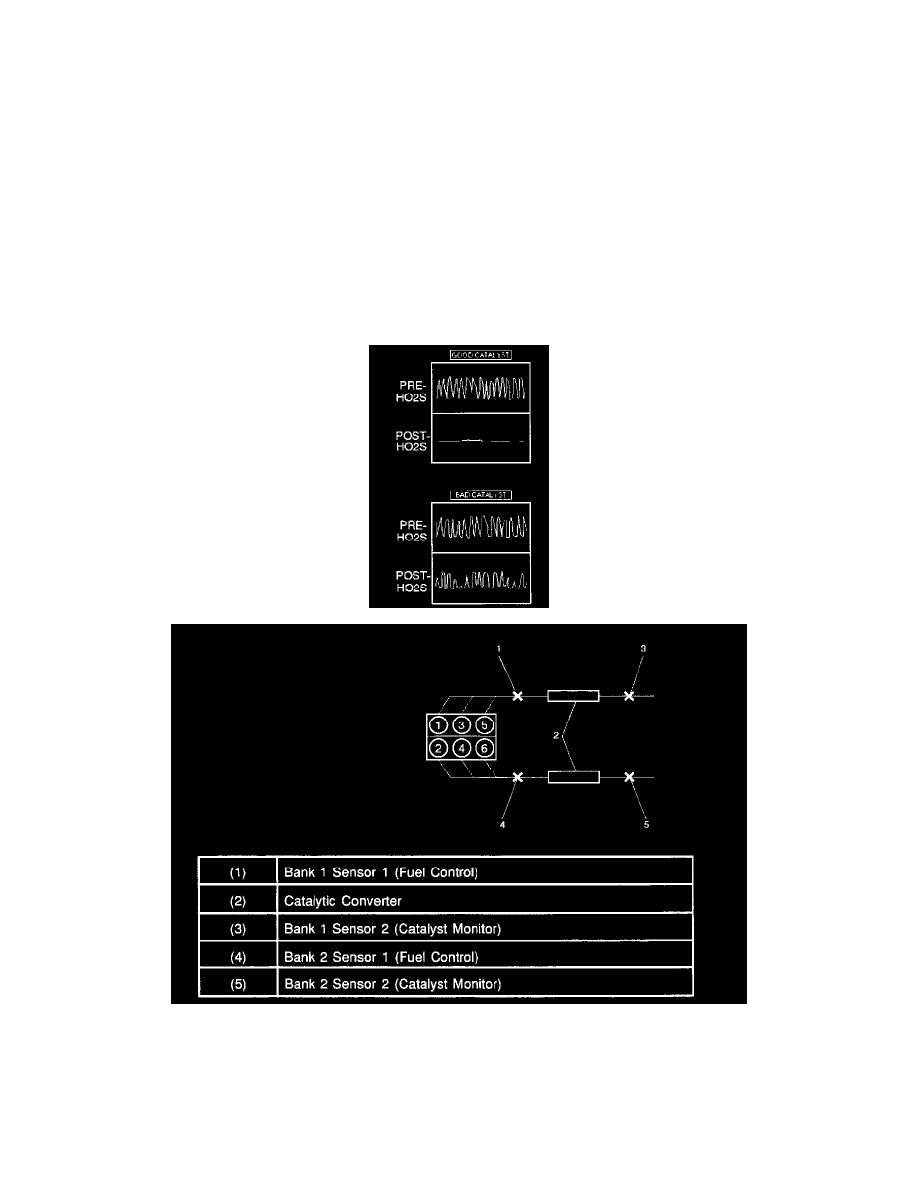Rodeo S 4WD V6-3.2L (1999)

Catalytic Converter: Description and Operation
Three Way Catalytic Converter
Three-way catalytic converters are used to control emissions of hydrocarbons (HC), carbon monoxide (CO), and oxides of nitrogen (NOx).
The catalyst within the converters promotes a chemical reaction. This reaction oxidizes the HC and CO present in the exhaust gas and converts them into
harmless water vapor and carbon dioxide.
The catalyst also reduces NOx by converting it to nitrogen. The PCM can monitor this process using the Bank 1 HO2S 2 and the Bank 2 HO2S 2 heated
oxygen sensors.
The Bank 1 HO2S 1 and the Bank 2 HO2S 1 sensors product an output signal which indicates the amount of oxygen present in the exhaust gas entering
the three-way catalytic converter.
The Bank 1 HO2S 2 and the Bank 2 HO2S 2 sensors produce an output signal which indicates the oxygen storage capacity of the catalyst. This indicates
the catalyst's ability to efficiently convert exhaust gases. If the catalyst is operating efficiently, the Bank 1 HO2S 1 and the Bank 2 HO2S 1 signals will
be more active than the signals produced by the Bank 1 HO2S 2 and the Bank 2 HO2S 2 sensors.
The catalyst monitor sensors operate the same as the fuel control sensors. The Bank 1 HO2S 2 and the Bank 2 HO2S 2 sensors' main function is catalyst
monitoring, but they also have a limited role in fuel control. If a sensor output indicates a voltage either above or below the 450 mV bias voltage for an
extended period of time, the PCM will make a slight adjustment to fuel trim to ensure that fuel delivery is correct for catalyst monitoring.
